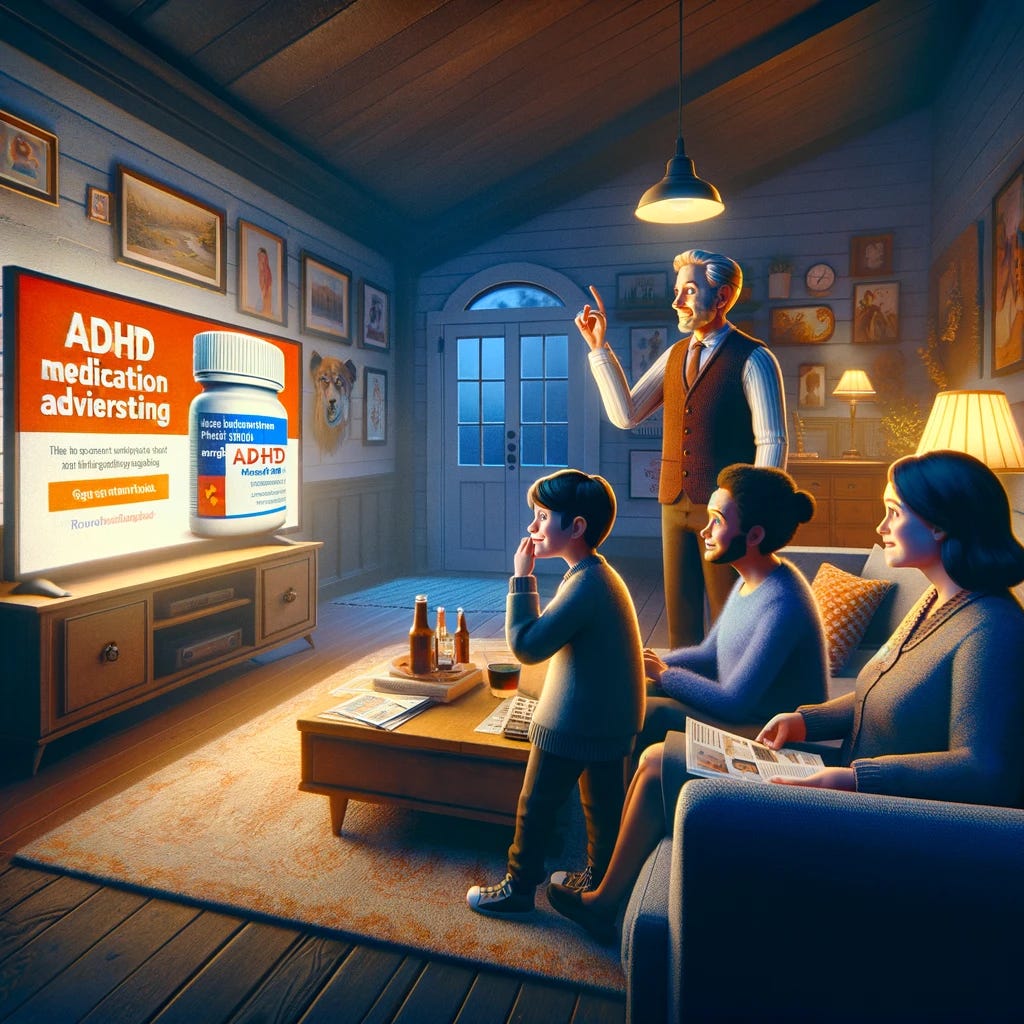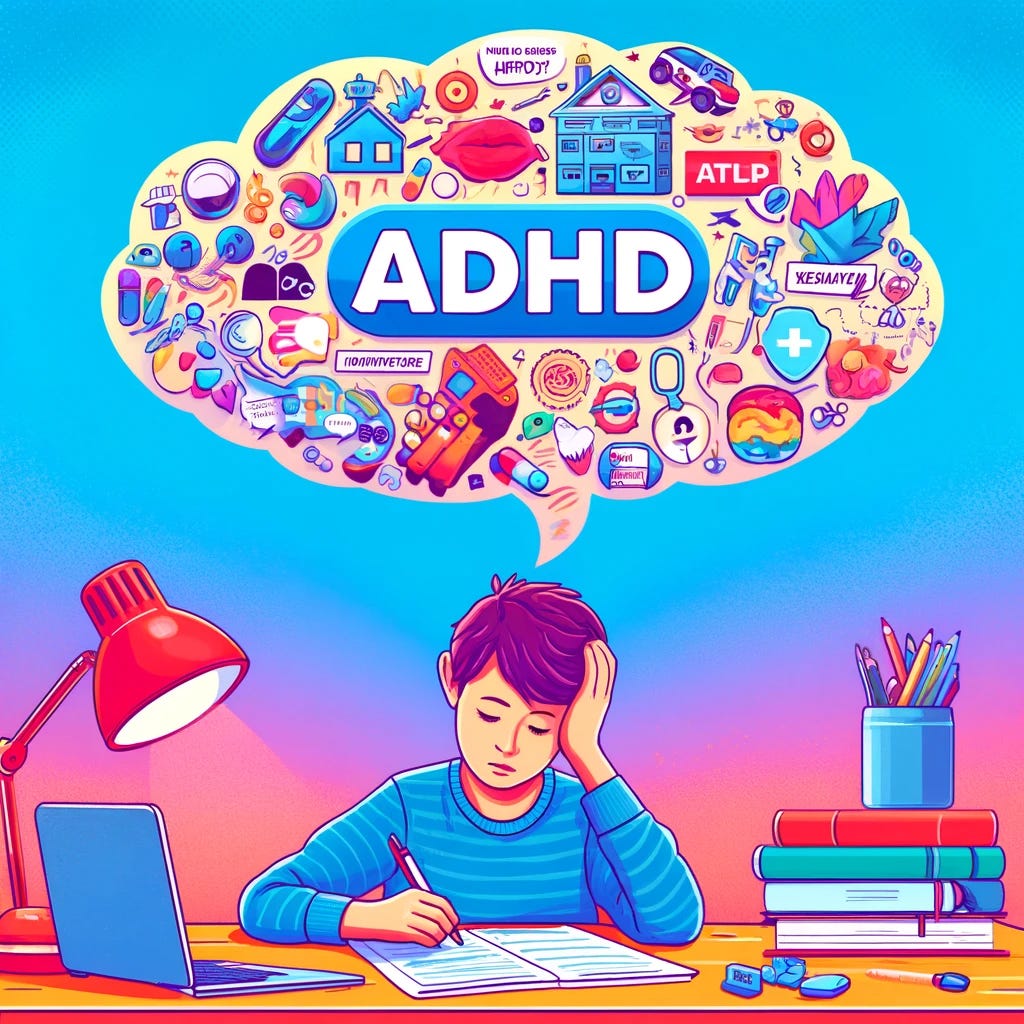Direct-to-Consumer Advertising of ADHD Medications: Impacts on Diagnosis Rates and Public Perception
Direct-to-Consumer Advertising of ADHD Medications: Impacts on Diagnosis Rates and Public Perception
Introduction
In the realm of healthcare, few topics have been as hotly debated as the direct-to-consumer (DTC) advertising of prescription medications. DTC advertising is where pharmaceutical companies market prescription medications directly to the public, typically through mediums such as television, radio, print, and digital channels. One of the most controversial areas of DTC advertising has been its role in the marketing of attention-deficit/hyperactivity disorder (ADHD) medications. This form of advertising has raised questions about its impact on diagnosis rates and how it shapes the public’s understanding of ADHD.
The Rise of DTC Advertising

DTC advertising is not a new phenomenon. Its modern incarnation began in earnest in the 1980s and took off in the 1990s, especially after the U.S. Food and Drug Administration (FDA) relaxed rules governing the practice in 1997 (Ventola, 2011). Before this shift, pharmaceutical companies focused their marketing efforts on doctors and other healthcare professionals. The change in regulations opened the floodgates for the public to become a primary audience for pharmaceutical messaging.
ADHD, as a diagnosis, saw a significant rise during this period. Some studies have shown that the prevalence of diagnosed ADHD in children increased by nearly 50% between 1997 and 2016 (Danielson et al., 2018). While numerous factors contribute to this increase, it is essential to consider the potential influence of DTC advertising.
Advertising’s Influence on Diagnosis
One of the primary concerns surrounding DTC advertising of ADHD medications is its potential to drive up diagnosis rates. This fear isn’t unfounded. A study by Donohue et al. (2007) found that, in conditions with effective advertising like depression, DTC ads led to more diagnoses and greater medication use. It’s plausible that a similar effect might exist for ADHD medications, although further research is needed.
Moreover, DTC advertising can sometimes blur the lines between common behaviors and clinical symptoms. For example, advertisements might show a child struggling with homework, suggesting that this could be a sign of ADHD when, in reality, many children without the disorder also face such challenges. By broadening the perception of what constitutes ADHD, DTC advertising might inadvertently push parents and adults to seek diagnosis and treatment based on behaviors that might be within the range of normal (Wolraich et al., 2011).

Shaping Public Perception
Beyond influencing diagnosis rates, DTC advertising plays a substantial role in shaping the public’s understanding and perception of ADHD. This is not just about increasing awareness; it’s about defining what ADHD is and how it should be managed.
Pharmaceutical advertisements tend to simplify complex medical conditions for brevity and clarity. While this can be useful, it also runs the risk of painting a potentially skewed picture of the disorder. For ADHD, this might mean emphasizing more overt symptoms like inattention while downplaying other important aspects like impulsivity or emotional dysregulation.
Additionally, the treatment landscape presented in advertisements is often oriented towards medication. This focus can overshadow other vital components of ADHD management, such as behavioral therapy, education, and lifestyle modifications. The emphasis on medication could lead the public to view it as the primary, or even sole, solution to ADHD (Kravitz & Bell, 2007).
Ethical Considerations
DTC advertising’s role in healthcare is fraught with ethical concerns. From an industry perspective, the goal is to increase the consumption of their products, which might not always align with the best interests of patients. There is a fine line between informing the public and unduly influencing their healthcare choices (Wilkes et al., 2000).
Another ethical issue arises when considering the vulnerable populations exposed to these advertisements. Children and adolescents, for instance, might not have the cognitive capacity to critically assess the information presented, potentially leading them to form biased views about ADHD and its treatment.

Conclusion
The influence of direct-to-consumer advertising on ADHD cannot be understated. From potentially driving up diagnosis rates to shaping public understanding and perception, these advertisements play a pivotal role in the ADHD narrative. As the public becomes more health literate and as advocacy groups demand transparency and responsibility, the pharmaceutical industry and regulatory bodies will need to consider the broader implications of this powerful communication tool.
References
- Danielson, M. L., Bitsko, R. H., Ghandour, R. M., Holbrook, J. R., Kogan, M. D., & Blumberg, S. J. (2018). Prevalence of Parent-Reported ADHD Diagnosis and Associated Treatment Among U.S. Children and Adolescents, 2016. Journal of Clinical Child & Adolescent Psychology, 47(2), 199–212.
- Donohue, J. M., Cevasco, M., & Rosenthal, M. B. (2007). A Decade of Direct-to-Consumer Advertising of Prescription Drugs. The New England Journal of Medicine, 357, 673–681.
- Kravitz, R. L., & Bell, R. A. (2007). Media, Messages, and Medication: Strategies to Reconcile What Patients Hear, What They Want, and What They Get. Journal of General Internal Medicine, 22(Suppl 2), 403–409.
- Ventola, C. L. (2011). Direct-to-Consumer Pharmaceutical Advertising: Therapeutic or Toxic? Pharmacy and Therapeutics, 36(10), 669–674.
- Wilkes, M. S., Bell, R. A., & Kravitz, R. L. (2000). Direct-to-Consumer Prescription Drug Advertising: Trends, Impact, and Implications. Health Affairs, 19(2), 110–128.
- Wolraich, M. L., Wibbelsman, C. J., Brown, T. E., Evans, S. W., Gotlieb, E. M., Knight, J. R., … & Wilens, T. (2011). Attention-Deficit/Hyperactivity Disorder Among Adolescents: A Review of the Diagnosis, Treatment, and Clinical Implications. Pediatrics, 115(6), 1734–1746.
Dr. Jerry D. Smith Jr. is a clinical psychologist and empathic expert specializing in human empowerment and leadership.
More from Dr. Jerry Don Smith Jr. and The ADHD Review





